The Laurence Binyon Prize: Journey to Japan
The Laurence Binyon Prize: Journey to Japan
By Youxi Chen, Third Year BA History of Art, October 2023
My journey to Japan predominantly revolved around two distinguished locales: Kyoto and Tokyo. These two cities have names that intriguingly form anagrams of each other. The two cultural capitals of Japan offered me brief yet intricately complex encounters, leaving me oscillating between a sense of fascination and ambivalence. This trip was made possible by the generosity of the Laurence Binyon Prize, a travel grant that encourages students of History of Art to embark on their journeys of inquiry.
Aside from my main interest in exploring the visual culture of nijigen (the ACG subculture), I have also had the chance to visit other exhibitions, such as the Tokyo Photographic Museum’s exhibition: After the Landscape Theory, Yayoi Kusama Museum’s Yayoi Kusama’s Self-Obliteration/Psychedelic World, and Mori Art Museum 20th anniversary exhibition.
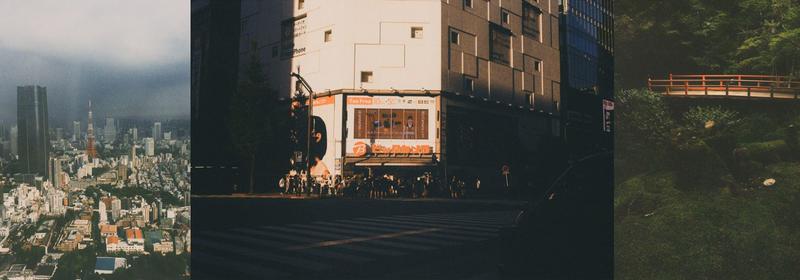
Nijigen, Japan Through Looking Glass
With the sophisticated visual language, formal aesthetics, and narrative prowess of both manga and anime, Nijigen has permeated every facet of Japan's cultural tapestry. This two-dimensional world has seamlessly interwoven itself into the very fabric of reality, infiltrating and influencing in every conceivable way.
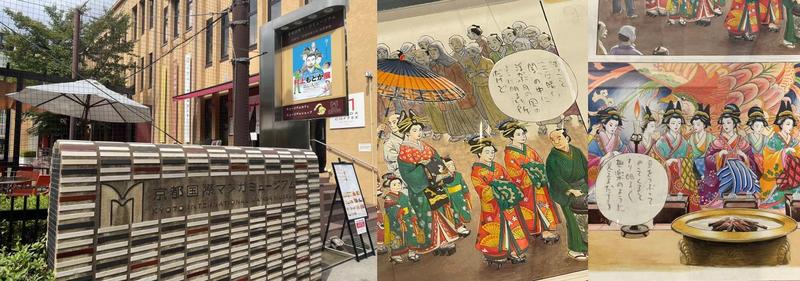
The Kyoto International Manga Museum is a museum that focuses on the multimedia form of manga. In practical terms, this museum functions as a library, encompassing a comprehensive collection of manga spanning various eras and genres. It offers visitors the freedom to leisurely immerse themselves in the works of their favourite artists. Small exhibitions, be they permanent or temporary, were scattered around the buildings. A giant sculpture of Osamu Tezuka’s Phoenix hangs aloft on the ceiling, gazing down upon every visitor. Phoenix is considered to be Tezuka’s magnum opus, an ultimate coda to the life of the artist. Such a display testifies to the museum's ambition to elevate manga as a form of art, with its canon of geniuses.
One of the second-floor exhibition spaces further underscores this thematic reverence for manga as an art form. It houses a collection of plaster casts featuring the hands of prominent ACG (Anime, Comic, and Games) artists. Big names in the industry, such as Hayao Miyazaki, the anime director from Ghibli Studio, Katsuhiro Otomo, the creator of Akira (1988), and Shigeru Miyamoto, the director of Nintendo, all find a small cubicle to cement their legacy as a sensei in the field. This space is a sacred shrine for enthusiasts (otakus) to venerate and pay homage to. Plaster casts are indexical signs signifying the actual hands of the artist, and infer the cult of geniuses, as the hand is a synecdoche for craftsmanship. Hand-drawn drafts of artworks are not self-contained and finished creations; the process of publishing and disseminating requires collaboration and cannot be accomplished by a single individual. Even though manga’s final material exists as various forms of reproductions, these hand-drawn drafts by artists are showcased on pedestals, where these original drafts emit a similar “aura” and charm to sculptures or paintings.
At the end of the corridor lies the 2022 map of ‘pilgrimage’, or seichi junrei for ACG lovers, highlighting 88 real-life locations in Japan featured across different ACG franchises. These locations are known as seichi, meaning sacred sites. On one hand, these sites are the thin yet impermeable walls between the real and the virtual. On the other hand, they are also portals that bridge the imagination of the subject. During these journeys, pilgrims often carry visual tokens referred to as “goods” with them (often in the form of a pin, stuffed toy or acrylic chara stand). These small, inanimate vessels bear the projected desires of their owners. They serve as a means to bridge the gulf between the two-dimensional world of Nijigen and the three-dimensional world of Sanjigen. As material objects, these tokens belong to both the realm of capitalist fetishism as cultural commodities, but also serve as unique memory objects, carrying irreplaceable memories.
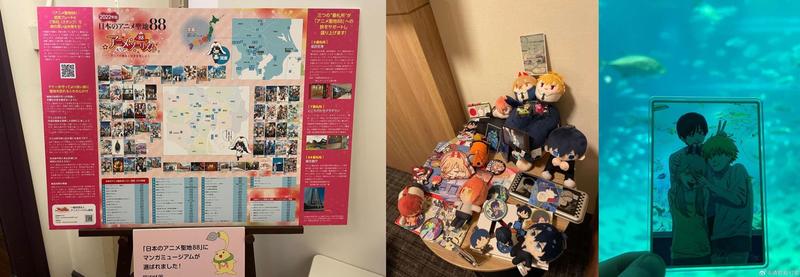
Without a doubt, the most important exhibition housed in Kyoto International Manga Museum is its permanent exhibition on "What is Manga?", nestled within the Manga Hall of Fame. This room showcases manga ‘masterpieces’ spanning every decade, dating back to the Taisho era (1912-1926). As I strolled through this immersive space, I saw that the bookshelves stood tall like walls, and each manga volume acted as both a brick and a thread, seamlessly weaving together a tapestry that unfurled across time and space. What unfolded before my eyes was an eager attempt to construct a constructive visual history for manga. It sought to provide a condensed overview of the medium's history, encompassing its prehistory, chronological evolution, taxonomy, formal attributes, modes of production, methods of dissemination, and global reception. In many ways, the Kyoto International Manga Museum replicates the roles and displays of traditional galleries and libraries. Within this expansive, all-encompassing framework, and most importantly through a selective process, it becomes evident that this institution serves as an authoritative source for the creation of knowledge about manga.
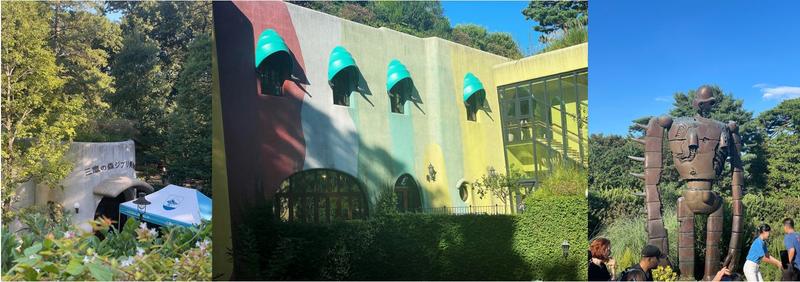
The rigidity of Kyoto International Manga Museum forms a nice contrast to my experience at the Ghibli Museum in Mitaka. According to Hayao Miyazaki, who is the internationally acclaimed director and executive director of the Ghibli Museum and who has articulated his vision for the institution, "To make such a museum, the building must be... Put together as if it were a film."[1] Indeed, the building itself is meant to be experienced in idiosyncrasy through close engagement with the architectural structure itself. The stained glasses invite an interplay of light in the interior; displays are positioned at a lower height to allow children to comfortably view them. Original artworks, storyboards and designs are displayed in its studio context with pieces of furniture in the style of the Arts and Crafts movement. The rooms not only emit the studio’s artistic vision but also a vision of a lifestyle prophesied by their works. The interior prohibits photography of all kinds, so I have little photographic evidence of my time there. Perhaps the lack of photography made me more aware of my presence, and my mission to record and reflect. In return, I became fully immersed in a meticulously orchestrated dream, made possible by the willingly suspended sense of disbelief.
History unresolved, future uncertain
Nonetheless, the Ghibli Museum is not merely a utopian world detached from reality, devoid of context, and disinterested in the tangible world. The duality of modernism is at the heart of many Ghibli films. This is evident across the museum, inviting keen reflections on the modern history of Japan. On the museum's rooftop, an enormous statue of the Laputan Robot Trooper loomed. This giant robot from Castle in the Sky (1986) signifies humanity's capacity for both creation and self-destruction. Similar to the Laputan Robot Trooper, which comes in both combat and non-combat versions, there is a duality within us represented by Sheeta and Muska, the film’s protagonist and antagonist - the two heirs of Laputa.
The other persistent visual element in the museum was aircraft, aircraft in its multiplicity of forms. On one hand, the studio’s obsession with the mechanism of aircraft is a vehicle for their manipulation of space through animation. However, for Ghibli creators like Miyazaki and Takahata, the silhouette of aircraft also conjures up war-time memories. Hayao Miyazaki’s father’s factories manufactured aircraft for the Japanese Imperial Army, while Isao Takahata’s native city was heavily bombed by the US Army (much like my own native city, bombed by the Japanese). The double image of the aircraft as both a dream and a source of destruction is something that perpetuates the works of Ghibli directors. In the museum, aircraft hang from ceilings, decorate the tables, and their designs fill pages and pages of storyboards. In a recent interview, the filmmaker and director of Ghost in the Shell (1995), Mamoru Oshii, commented on Miyazaki’s new animation, The Boy and the Heron (2023), saying that, since The Wind Rises (2013), “Director Hayao Miyazaki has lost the desire to create stories for others. He no longer considers the audience, the later generation, or anyone else. In his eyes, there is no one else but himself.”[1] It is true that some of Miyazaki’s most important works seem to be trapped in the labyrinth of childhood, war, and the longing image of the mother… all calling back his most primordial desires and deepest regrets. Miyazaki, in his twilight years, with each rehearsal of his swan song, has descended deeper into his trauma. I found this personal recollection deeply touching, especially after visiting the Ghibli museum, for I saw with my own eyes how nostalgia for an unresolved past can be transformed into a totalising physical space. Upon our entrance to the museum, visitors are given a small piece of film, as a souvenir. Every frame of film can be rewound and revisited, allowing us to paddle against the current, in an act of remembrance that rehearses the arrival of death. For this, I am reminded of the old saying that, even in the blissful utopia of Arcadia, the shadows of death linger.
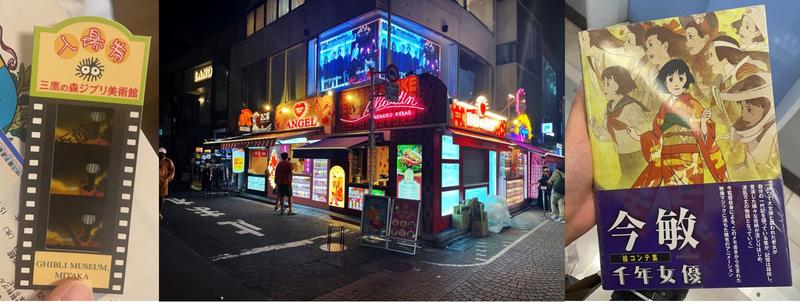
Thanks to the Laurence Binyon Prize, I was able to organise a trip based on my academic and personal pursuits beyond the university’s curriculum. These first-hand encounters have deepened my comprehension of visual culture and art history. The liberty granted to me in the planning and realisation of this trip made me anticipate my potential future as a graduate student and researcher.
All photos by Youxi Chen




